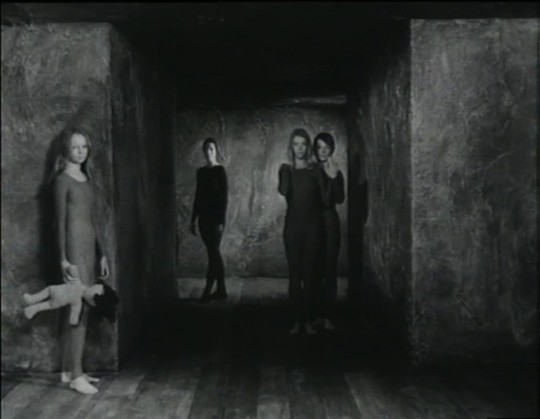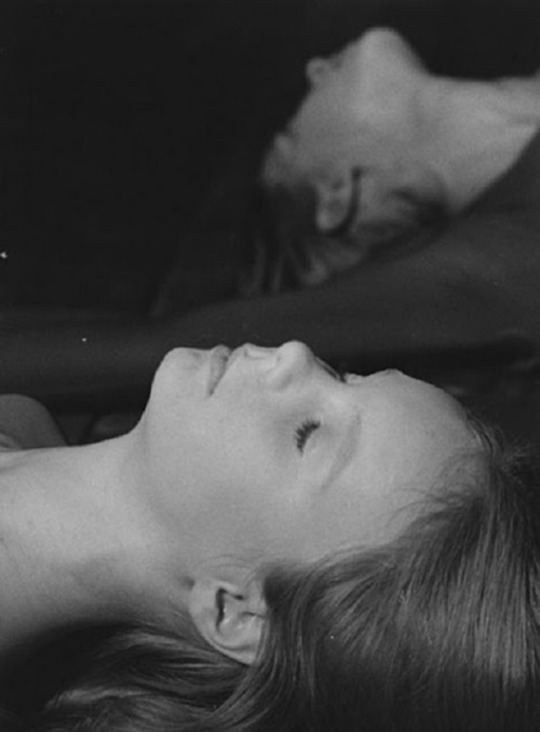#donya feuer
Explore tagged Tumblr posts
Text
MARK FRANKO

Lundi 29 avri 2024 à 19h (heure de Paris)
Monday April 29th 2024, 7pm (Paris time)
@ MSH, 16 – 18 RUE SUGER, 75006 (métro Odéon ou St – Michel)
Mark Franko est un historien de la danse de réputation internationale. Il a renouvelé notre compréhension de la danse baroque autant que de la performance et de la chorégraphie du XXe siècle dont il a étudié particulièrement les relations avec le champ politique et la constitution des collectifs. Depuis Dancing Modernism/Performing Politics en 1995, il a publié Dance as Text: Ideologies of the Baroque Body traduit en Français par les Éditions de l’Éclat sous le titre La danse comme texte : Idéologies du corps baroque ; The Dancing Body in Renaissance Choreography: Kinetic Theatricality and Social Interaction (2022) ; The Work of Dance: Labour, Movement and Identity in the 1930s (2002) ; Martha Graham in Love and War : The Life in the Work (2012 )et, en 2020, The Fascist Turn in the Dance of Serge Lifar: Interwar French Ballet and the German Occupation. Il est aussi le co-éditeur de Acting on the Past: Historical Performance Across the Disciplines (2000). En 2018 une anthologie de ses écrits a été publiée par Routledge : Choreographing Discourses: A Mark Franko Reader qui permet de retrouver les nombreux articles qu’il a publiés dans Discourse, PMLA, The Drama Review, Res: Anthropology and Aesthetics, Theatre Journal… Mark Franko est professeur de Danse et président du département des Arts du Théâtre de l’Université de Californie, Santa Cruz. Mais Franko a aussi poursuivi une carrière de danseur et de chorégraphe, d’abord (1964-1969) dans le cadre du Studio for Dance, à New York, un bastion précoce de la danse post-moderne auquel il a consacré un livre, Excursion for Miracles: Paul Sanasardo, Donya Feuer, and Studio for Dance. Avec sa propre compagnie, NovAntiqua, fondée en 1985, il a travaillé le répertoire classique autant que la restitution des danses du Bauhaus par exemple. Son œuvre de chorégraphe a obtenu le soutien du National Endowment for the Arts, the Harkness Foundation for Dance, the Getty Research Center for the History of Art and the Humanities, the Zellerbach Family Fund and the New Jersey State Council on the Arts. NovAntiqua s'est produite au J. Paul Getty Museum (Malibu), au Berlin Werkstatt Festival, à la de la Torre Bueno Award Ceremony (Lincoln Center, New York), au Mueée d'Art de Toulon, à l'Opéra de Montpellier,au Lincoln Center Out-of-Doors Festival, aux Princeton University Theater and Dance Series, au Haggerty Art Museum (Milwaukee), et le ODC Theatre San Francisco.
[EN] Mark Franko is an internationally renowned dance historian. He has renewed our understanding of Baroque dance as much as of twentieth-century performance and choreography, whose relations with the political field and the constitution of collectives he has studied in particular. Since Dancing Modernism/Performing Politics in 1995, he has published Dance as Text: Ideologies of the Baroque Body, translated into French by Éditions de l'Éclat as La danse comme texte: Idéologies du corps baroque; The Dancing Body in Renaissance Choreography: Kinetic Theatricality and Social Interaction (2022); The Work of Dance: Labour, Movement and Identity in the 1930s (2002); Martha Graham in Love and War: The Life in the Work(2012 )and, in 2020, The Fascist Turn in the Dance of Serge Lifar: Interwar French Ballet and the German Occupation. He is also the co-editor of Acting on the Past: Historical Performance Across the Disciplines (2000). In 2018, an anthology of his writings was published by Routledge: Choreographing Discourses: A Mark Franko Reader, which brings together the many articles he has published in Discourse, PMLA, The Drama Review, Res: Anthropology and Aesthetics, Theatre Journal... Mark Franko is Professor of Dance and Chair of the Department of Theatre Arts at the University of California, Santa Cruz. But Franko has also pursued a career as a dancer and choreographer, first (1964-1969) with New York's Studio for Dance, an early bastion of post-modern dance to which he dedicated a book, Excursion for Miracles: Paul Sanasardo, Donya Feuer, and Studio for Dance. With his own company, NovAntiqua, founded in 1985, he has worked on the classical repertoire as well as the restitution of Bauhaus dances, for example. His choreographic work has been supported by the National Endowment for the Arts, the Harkness Foundation for Dance, the Getty Research Center for the History of Art and the Humanities, the Zellerbach Family Fund and the New Jersey State Council on the Arts. NovAntiqua has appeared at the J. Paul Getty Museum (Malibu), the Berlin Werkstatt Festival, the de la Torre Bueno Award Ceremony (Lincoln Center, New York), France's Toulon Art Museum, the Montpellier Opera, Lincoln Center Out-of-Doors Festival, the Princeton University Theater and Dance Series, the Haggerty Art Museum (Milwaukee), and ODC Theatre San Francisco.
Programmation et prochains rendez-vous sur ce site ou par abonnement à la newsletter : [email protected]
Pour regarder les séminaires antérieurs : http://www.vimeo.com/sysk/
Séminaire conçu et organisé par Patricia Falguières, Elisabeth Lebovici et Natasa Petresin-Bachelez et soutenu par la Fundación Almine y Bernard Ruiz-Picasso para el Arte
0 notes
Photo





The Condemned Women Dance (De fördömda kvinnornas dans) (1976) Ingmar Bergman
January 28th 2023
#the condemned women dance#de fordomda kvinnornas dans#1976#ingmar bergman#nina harte#helene friberg#lena wennergren#lisbeth zachrisson#donya feuer#short
10 notes
·
View notes
Photo

I had the honour to meet Donya Feuer at the Royal Dramatic Theatre around 2006. http://www.ingmarbergman.se/person/donya-feuer
0 notes
Photo

The Dancer - Donya Feuer | Documentary |681365065
0 notes
Video
vimeo
Titel: Pina - part 3 of 3 Text: Born as Philippine Bausch in 1940 in Solingen; under her nickname Pina she will later achieve international reputation with her Tanztheater based in nearby Wuppertal. Her parents run an inn as part of a hotel in Solingen, where Pina, like her siblings, lent a hand. She learns to observe people; above all, what moves people deep down. In her later work small pieces of this early childhood environment seem to resound: the sound of music, people coming and going, telling of their longing for happiness. But also the early experience of war is reflected in the pieces, as sudden outbursts of panic and fear of an anonymous threat. Following first experiences at Solingen's children's ballet, at the age of 14 Pina Bausch started her dance training at the Folkwang Hochschule under Kurt Jooss. Before and after the Second World War, Jooss was a distinguished representative of the German modern dance movement, which had freed itself from the shackles of classical ballet. In his teaching, however, he reconciled the free spirit of dance revolutionaries with the principles of ballet. This is how the young dance student learned creative freedom as well as reaching proficiency in a clear form. Also important was the proximity to other arts, which are also taught at the Folkwang Hochschule: opera, music, drama, sculpture, painting, photography, design, and more. This wholly open approach will influence the choice of methods in her work as choreographer. In 1958 she was awarded the Folkwang-Price and armed with a grant from the German Academic Exchange Service, she leaves for one year as a special student at the Juilliard School of Music to New York. The city is a Mecca of dance, where classical ballet is being reinvented by the likes of George Balanchine, as well as the development of modern dance. Pina Bausch's teachers include Antony Tudor, José Limón, and dancers of the Martha Graham Dance Company, Alfredo Corvino, and Margaret Craske. As a dancer she worked with Paul Taylor, Paul Sanasardo and Donya Feuer. pina-film.de, Hochgeladen von: Georgi Georgiev, http://ift.tt/2feIDMo
0 notes
Photo

Tonight: Celebrated documentary The Dancer screens with star Katja Björner in person as part of the MoMA Film series Donya Feuer: Dance Film Collaborations with Ingmar Bergman, Romola Nijinsky, and Others.
[The Dancer. 1994. Sweden. Directed by Donya Feuer. Courtesy of First Run Features]
#Donya Feuer#The Dancer#Swedish Film#Swedish Directors#Royal Swedish Ballet#Ballet#Dance#Choreograph#Choreographer#Choreography#Film#MoMA Film#Dance Film#Katja Bjorner#Katja Björner#Ballerina#Ingmar Bergman#Romola Nijinsky
273 notes
·
View notes
Photo

The Dancer - Donya Feuer | Documentary |681365065
0 notes
Photo

The Dancer - Donya Feuer | Documentary |681365065
0 notes
Photo

The Dancer - Donya Feuer | Documentary |681365065
0 notes
Photo

The Dancer - Donya Feuer | Documentary |681365065
0 notes
Photo

The Dancer - Donya Feuer | Documentary |681365065
0 notes
Photo

The Dancer - Donya Feuer | Documentary |681365065
0 notes
Photo

The Dancer - Donya Feuer | Documentary |681365065
0 notes
Photo

The Dancer - Donya Feuer | Documentary |681365065
0 notes
Photo

The Dancer - Donya Feuer | Documentary |681365065
0 notes
Photo

The Dancer - Donya Feuer | Documentary |681365065
0 notes